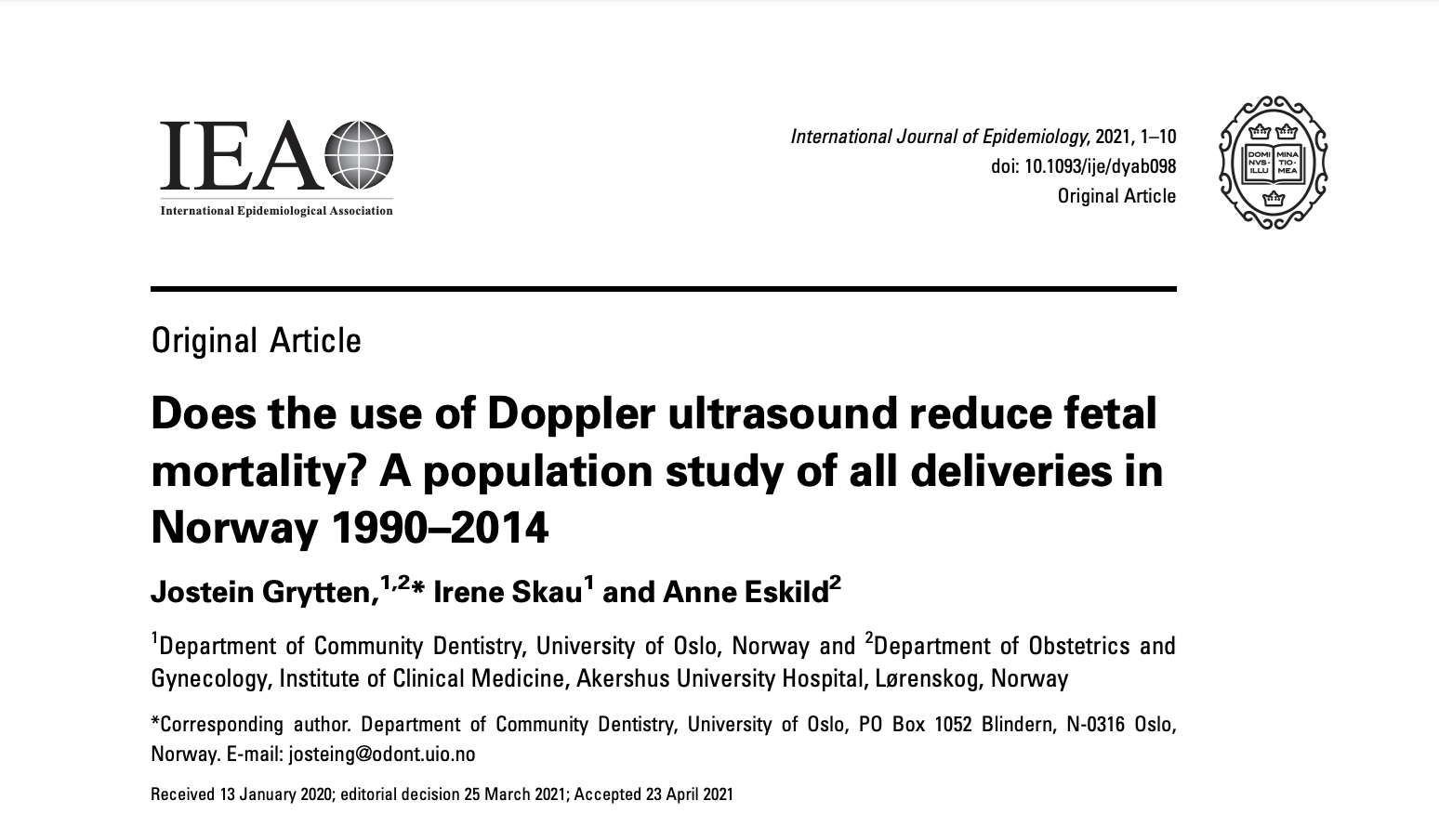Abstract
Background
The aim of the present study was to examine the effect that the introduction of Doppler ultrasound in obstetric care has had on fetal death in Norway. One mechanism by which Doppler ultrasound may reduce fetal death may be through the increased use of Caesarean delivery. Therefore, we also examined the effect that the use of Doppler ultrasound has had on the use of Caesarean delivery.
Methods
The Medical Birth Registry of Norway provided detailed medical information for ∼1.2 million deliveries from 1990 to 2014. Information about the year of introduction of Doppler ultrasound was collected directly from the maternity units, using a questionnaire. The data were analysed using a hospital fixed-effects regression model with fetal death as the outcome measure. The key independent variable was the introduction of Doppler ultrasound at each maternity ward. Hospital-specific trends and risk factors of the mother for fetal death were included as covariates.
Results
For pre-term deliveries, the introduction of Doppler ultrasound contributed to a reduction in fetal death of ∼30% and to an increase in planned Caesarean section of ∼15%. There were no effects for emergency Caesarean sections or inductions pre-term. The introduction of Doppler ultrasound had no effect on fetal death or Caesarean section for term deliveries.
Conclusions
The introduction of Doppler ultrasound during the 1990s and 2000s made a significant contribution to the decline in the number of pre-term fetal deaths in Norway. Increased use of Caesarean section may have contributed to this reduction.
